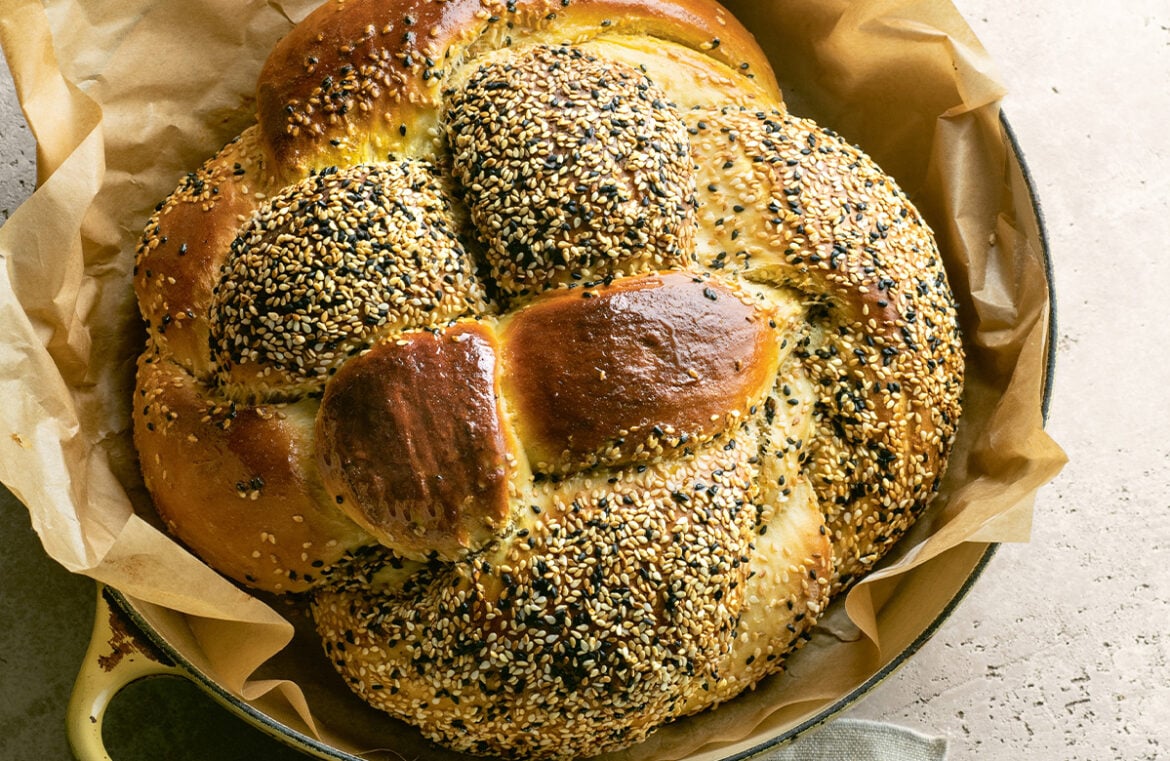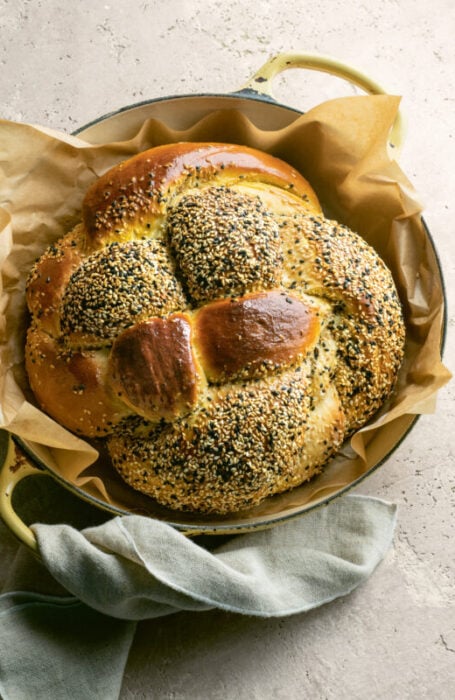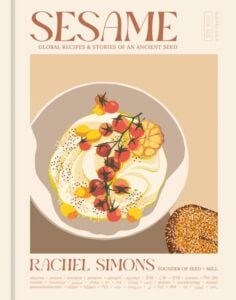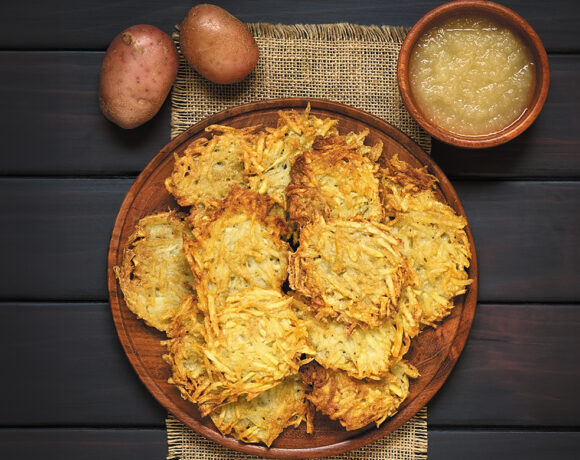Eating challah on the Friday night Sabbath is a treasured ritual and family tradition. If there is one recipe in this book that most defines the intersection of my cultural and culinary identity, it would be this one. Making challah feels personal. It feels meditative. And it’s a tradition I hope my children will share with the next generation. I particularly love the symbolism of making a round, sweet challah on Rosh Hashanah, the Jewish New Year. The round shape represents the infinite cycle of life, offering a moment for reflection and redemption as one year ends and a new one begins. I always eat challah on the day it is baked, preferably while still warm from the oven! But, I also enjoy having a few slices left over to make French toast for Saturday breakfast.
Makes 1 large round loaf or 2 small rounds
WHAT YOU NEED
For the dough
1 cup warm (about 115°F) water
1 tablespoon sugar, plus ½ cup
1 packet (2¼ teaspoons) active dry yeast
1 tablespoon honey
3 eggs, at room temperature
5 to 6 cups bread flour
½ cup plus ½ teaspoon extra-virgin olive oil
2 teaspoons kosher salt
For the challah glaze
1 egg, at room temperature
1 teaspoon honey
1 teaspoon water
⅓ cup Gomasio*, or ⅓ cup black and white sesame seeds and 1½ teaspoons flaky salt
*Gomasio
1 cup well-toasted sesame seeds
¼ cup flaky salt
WHAT TO DO
To make the gomasio
In a mortar, combine the sesame seeds and 3 tablespoons of the salt, using a pestle to grind them into a coarse meal. Alternatively, combine the seeds and salt in a food processor and blitz until you are happy with the texture. Stir in the remaining 1 tablespoon salt. Store the gomasio in an airtight container at room temperature for up to 1 month, or freeze for up to 4 months
To make the dough
In the bowl of a stand mixer fitted with the whisk attachment, combine the water and 1 tablespoon of the sugar and whisk until the sugar is dissolved. Sprinkle the yeast over the mixture and let sit until you see the mixture starting to bubble and foam, 5 to 10 minutes. If the mixture is not frothy after 10 minutes, you’ll need to start again with a fresh packet of yeast.
Add the remaining 1⁄2 cup sugar, honey, eggs, and 1 cup of the flour to the yeast mixture. Whisk on low speed until just combined, then add 1⁄2 cup olive oil and whisk again until the mixture resembles thick pancake batter.
Switch to the dough hook and with the mixer on low speed, gradually add the salt and 3 1⁄2 cups of the remaining flour in three additions. At this stage, assess whether your dough looks shaggy (this will depend on the humidity of your workspace). In order to bring the dough together into a smooth elastic ball, add more flour, 2 tablespoons at a time, using a spatula to scrape down the sides of the bowl after each addition. When the dough starts to have a smooth and slightly elastic texture, stop adding flour and knead, with the stand mixer on medium speed, for 10 to 12 minutes, or transfer the dough to a floured surface and knead by hand — I’ll do this whenever I have the time because I find the process relaxing and meditative.
Coat a large bowl with 1⁄2 teaspoon of the olive oil and place the dough in the bowl, turning it once so that it’s oiled on all sides. Cover the bowl with plastic wrap and place in a warm spot in your kitchen. Allow the dough to rise for at least 2 hours, or longer if you have the time. The dough should double in size.
When ready to braid, line one 11-inch round baking pan with parchment paper. If you are making two smaller round challahs, you will need two 8-inch round baking pans. Or you can use this dough to make any other braided shape of your choice.
To make the glaze
In a small bowl, whisk together the egg, honey, and water and set aside.
Braid the dough
Using your fist, punch the dough down in the bowl to reduce any air bubbles and then place the dough on a lightly floured work surface. Divide the dough into four equal balls and roll each ball into an 8-inch log (rounder in the center and slightly tapered at the ends). Place the gomasio on a plate and roll two of the logs in it until coated on all sides.
Begin creating a four-strand braid by arranging two of the logs horizontally and the other two vertically, overlapping them in a weave pattern. (I recommend watching a four-strand round challah braiding video on YouTube for assistance.)
Braid the dough by tucking one log under its neighbour to the left, going clockwise, then switching to go counterclockwise and tucking each log under its neighbour to the right until the ends of the logs. Tuck the ends under the base of the braid and place it on the prepared baking pan
Brush the glaze all over the non-seeded portions of the challah, including the sides, but try not to let the glaze pool in the creases of the braids. Keep the remaining glaze for a second coat before baking. Cover it with plastic wrap and place the baking pan in a warm, draft-free spot to rise for a second time, 40 to 50 minutes, or until the dough holds the indent of your finger when lightly pressed. You can also leave the dough in the refrigerator overnight, but bring it to room temperature before baking.
When ready to bake, preheat the oven to 350°F.
Glaze the non-seeded portions of the challah a second time. Bake until the bread is golden brown, about 35 minutes. You can also test the challah for doneness by tapping it and listening for a hollow sound.







COMMENTS